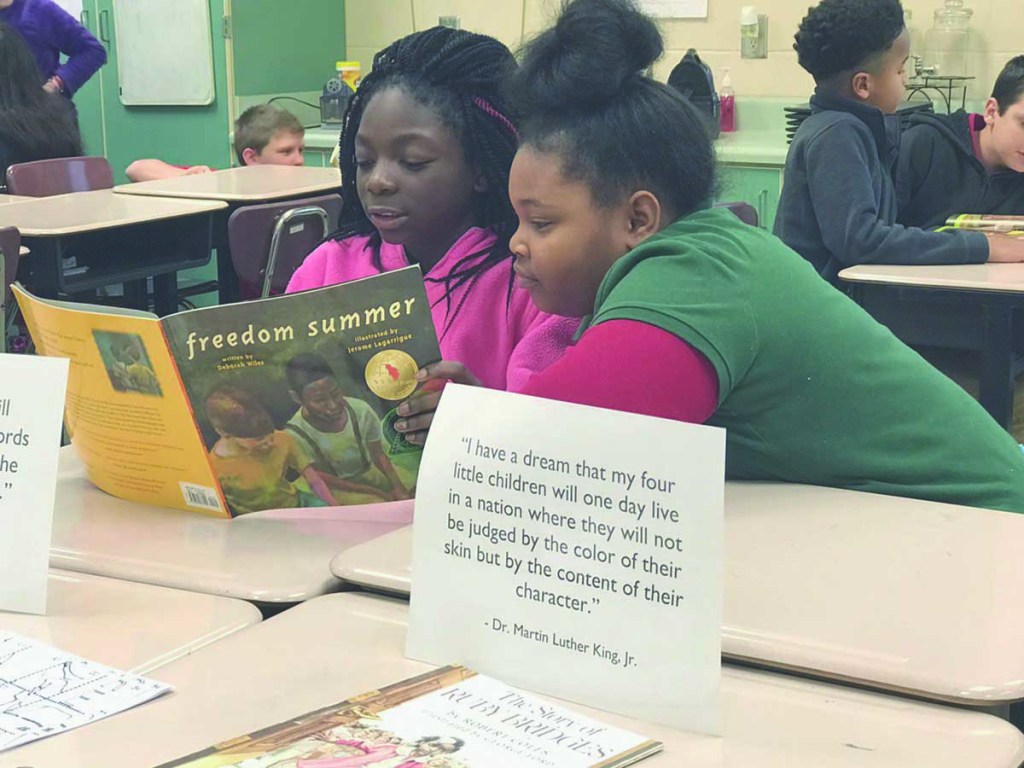Elementary students hear King’s message
Published 9:15 am Monday, January 9, 2017

- Fifth grade students at Creekside in Milledgeville take part in an exercise where they read a book and tried to match its message with a corresponding quote from Dr. Martin Luther King Jr.
MILLEDGEVILLE, Ga. — Getting elementary-age children to understand the level of racial inequality present in the United States during Dr. Martin Luther King’s time can be rather difficult.
Ryan Maraziti, or “Coach Maz” as his students know him, used an age-appropriate book by Doreen Rappaport to introduce his class to Dr. King.
Trending
“What we did is we used the book called ‘Martin’s Big Words’ to really just lay a foundation for a lot of the quotations and to really kind of personify what he stood for with the nonviolent approach and protests,” Maraziti said.
The book features some of the civil rights activist’s well-known quotes and gives children an introduction to the work he did to break barriers in society. The teacher got his students to observe how those quotes apply to other important figures such as Rosa Parks and Ruby Bridges.
“What we did from there is we took that and kind of expanded it,” said Maraziti. “We said in today’s world what examples do we see.”
He also said getting the kids to discuss these issues at a young age is a big positive in their development into young adults.
Kachari Davis, also a fifth grade teacher at Creekside, used an audible approach to introducing King’s message to her kids.
“What we did as a class is we first listened to Martin Luther King’s speech at the SCLC (Southern Christian Leadership Conference) and let them listen to his words and his tone so that they could feel the atmosphere and how he felt during that time when those kids during that time were faced with social injustices,” Davis said.
Trending
Both teachers said their students took the message of social equality and applied it to things happening in the world today.
“They couldn’t understand the concept of how things were then and how things are today because they don’t live in a world — pretty much — of that level of hatred and disparity,” Davis said. “However, when we started talking about it they started bringing more into their livelihoods like bullying and some of the issues that they could deal with.”
Maraziti said his classroom pointed to professional athletes and their chosen form of protest against inequality in kneeling during the playing of the national anthem as a current use of nonviolent protest.
“The one they picked up on is how the athletes are now protesting in a nonviolent form,” Maraziti said. “Whether or not they agreed with it, it was a nonviolent approach to get a message across. Hopefully that’s something King would have been proud to see is that nonviolent approach.”
Davis’ class took the discussion a step further and talked about ways to make the world a better place such as recycling, helping the elderly and putting a stop to bullying.
“We talked about what injustices were going on then in that era and how they are occurring here today,” Davis said. “We spoke about the bombing in France and some of the events going on in the United States and how they made us feel. But then I wanted them to look at how we in our communities are trying to change and pour out love and how we can change and where we should go.”


